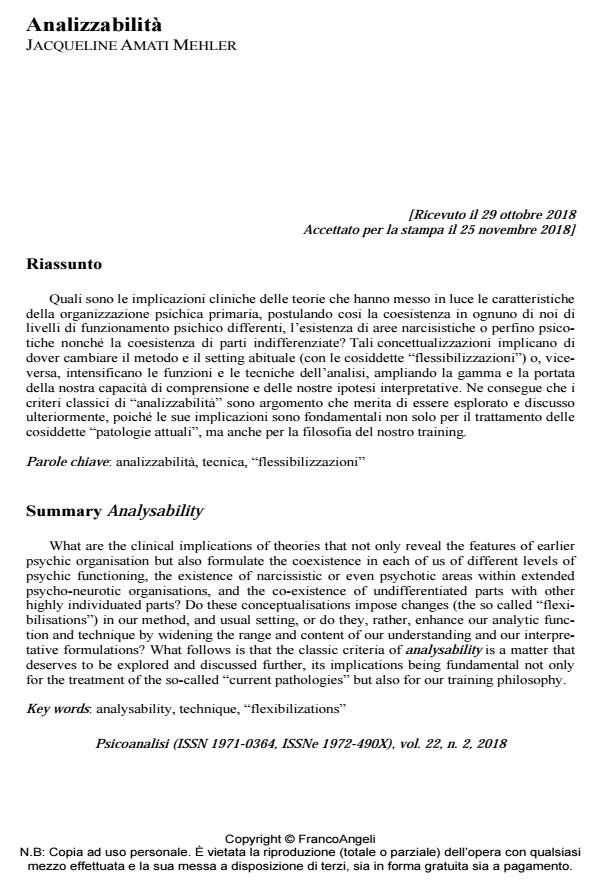Analizzabilità
Titolo Rivista PSICOANALISI
Autori/Curatori Jacqueline Amati Mehler
Anno di pubblicazione 2019 Fascicolo 2018/2
Lingua Italiano Numero pagine 8 P. 65-72 Dimensione file 130 KB
DOI 10.3280/PSI2018-002005
Il DOI è il codice a barre della proprietà intellettuale: per saperne di più
clicca qui
Qui sotto puoi vedere in anteprima la prima pagina di questo articolo.
Se questo articolo ti interessa, lo puoi acquistare (e scaricare in formato pdf) seguendo le facili indicazioni per acquistare il download credit. Acquista Download Credits per scaricare questo Articolo in formato PDF

FrancoAngeli è membro della Publishers International Linking Association, Inc (PILA)associazione indipendente e non profit per facilitare (attraverso i servizi tecnologici implementati da CrossRef.org) l’accesso degli studiosi ai contenuti digitali nelle pubblicazioni professionali e scientifiche
Quali sono le implicazioni cliniche delle teorie che hanno messo in luce le caratteristiche della organizzazione psichica primaria, postulando cosi la coesistenza in ognuno di noi di livelli di funzionamento psichico differenti, l’esistenza di aree narcisistiche o perfino psicotiche nonché la coesistenza di parti indifferenziate? Tali concettualizzazioni implicano di dover cambiare il metodo e il setting abituale (con le cosiddette "flessibilizzazioni") o, viceversa, intensificano le funzioni e le tecniche dell’analisi, ampliando la gamma e la portata della nostra capacità di comprensione e delle nostre ipotesi interpretative. Ne consegue che i criteri classici di "analizzabilità" sono argomento che merita di essere esplorato e discusso ulteriormente, poiché le sue implicazioni sono fondamentali non solo per il trattamento delle cosiddette "patologie attuali", ma anche per la filosofia del nostro training.
Parole chiave:Analizzabilità, tecnica, "flessibilizzazioni"
Jacqueline Amati Mehler, Analizzabilità in "PSICOANALISI" 2/2018, pp 65-72, DOI: 10.3280/PSI2018-002005